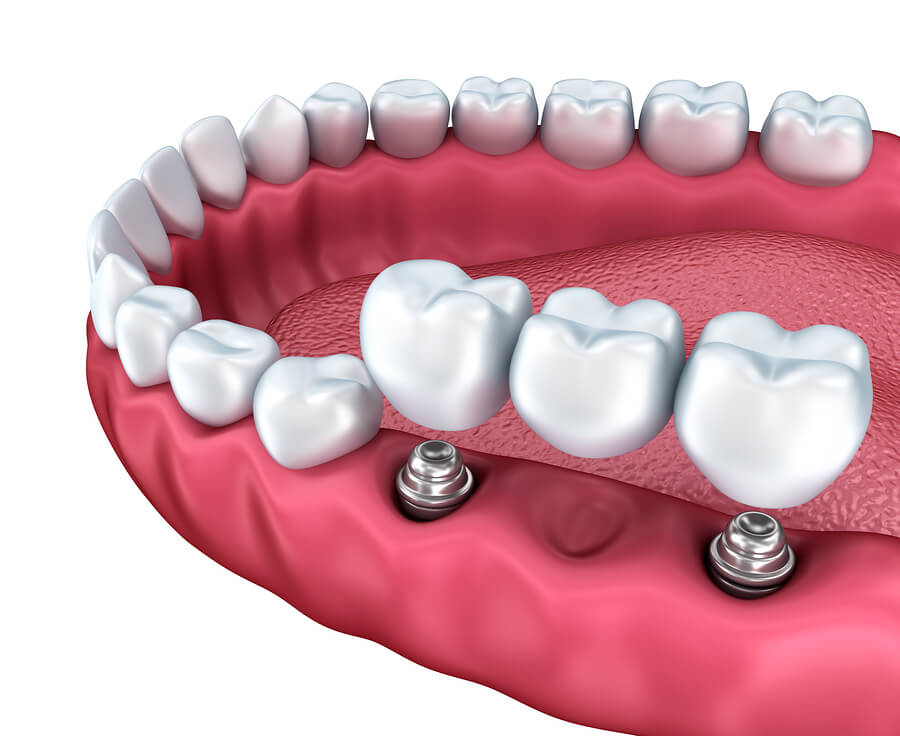In the past, tooth replacement has been limited to bridges and dentures which offered many risks and drawbacks. Dental implants have revolutionized the method of tooth replacement. Dental implants are made of titanium. However, the teeth that are placed on dental implants look and feel completely natural. Here is what you can expect from a dental implant procedure:
The Procedure
A dental implant procedure is usually an outpatient surgery performed in these stages:
• The damaged tooth is removed.
• The jawbone is prepared for surgery, a process that may involve bone grafting.
• After the jawbone heals, your oral surgeon places the dental implant metal post in the jawbone.
• Healing period which may last several months.
• Your oral surgeon places the abutment, which is an extension of the implant metal post. (In some cases, when the implant is very stable, this can be done at the same time that the implant is placed.)
• After the soft tissue heals, your dentist will make molds of the teeth and jawbone and later place the final tooth or teeth.
• The entire process can take months from start to finish. Much of that time is devoted to healing and waiting for the growth of new bone in your jaw.
Bone Grafting
If your jawbone isn’t thick enough or is too soft, you may need bone grafting before you can have a dental implant procedure. This is because the powerful chewing action of your mouth applies great pressure on your bone, and if it can’t support the implant, the surgery is likely to fail. A bone graft can create a more solid base for the implant.
In bone grafting, a piece of bone is removed from another part of your jaw or your body. The piece of bone is transplanted to your jawbone. Another option is to use artificial bone to place in these areas. It may take up to several months for the transplanted bone to grow enough new bone in order to support a dental implant.
Placing the Dental Implant
During the procedure, your surgeon will make an incision to open your gum and expose the bone. Holes are drilled into the bone where the dental implant metal post will be set. The metal post will act as the tooth root which is why it is implanted deep into the bone.
Waiting for Bone Growth
Once the metal implant post is placed in your jawbone, osseointegration begins. During this process, the jawbone grows into and connects with the surface of the dental implant. This process, which can take several months, helps to provide a solid base for your new artificial tooth.
Placing the Abutment
After osseointegration is complete, you may need additional surgery to place the abutment, which is the piece where the crown will eventually attach. This minor surgery is usually done with local anesthesia in an outpatient setting.
New Artificial Teeth
After the abutment is placed, your gums must heal for one or two weeks before the artificial tooth can be attached. Once your gums have healed, you’ll have more impressions made of your mouth and remaining teeth. These impressions are used to make the crown, which is your realistic-looking artificial tooth. The crown can’t be placed until your jawbone is sturdy enough to support the use of the new tooth.
You and your dental professional can choose artificial teeth that are either removable, fixed or a combination of both.
Recovery
Whether you have dental implant surgery in one stage or multiple stages, you may experience some of the typical discomforts associated with any type of dental surgery, such as:
• Swelling of your gums and face
• Bruising of your skin and gums
• Pain at the implant site
• Minor bleeding
• If swelling, discomfort or any other problem gets worse in the days after surgery, contact your oral surgeon. You may need pain medications or antibiotics.
Dr. Kao
If you need a periodontist in the Los Angeles area, contact Dr. Kao to schedule your consultation today.



